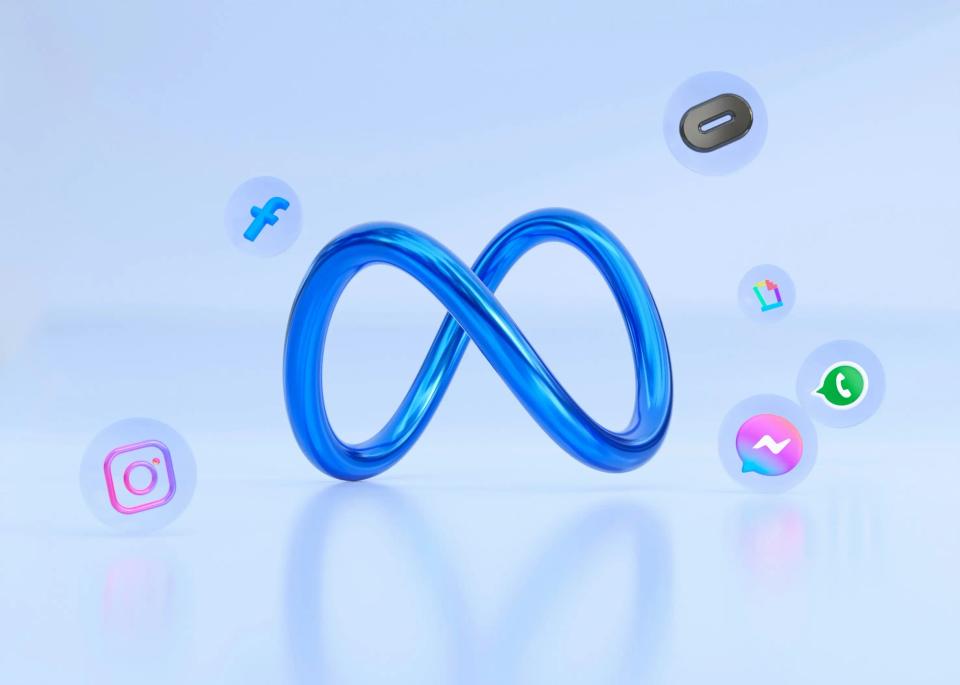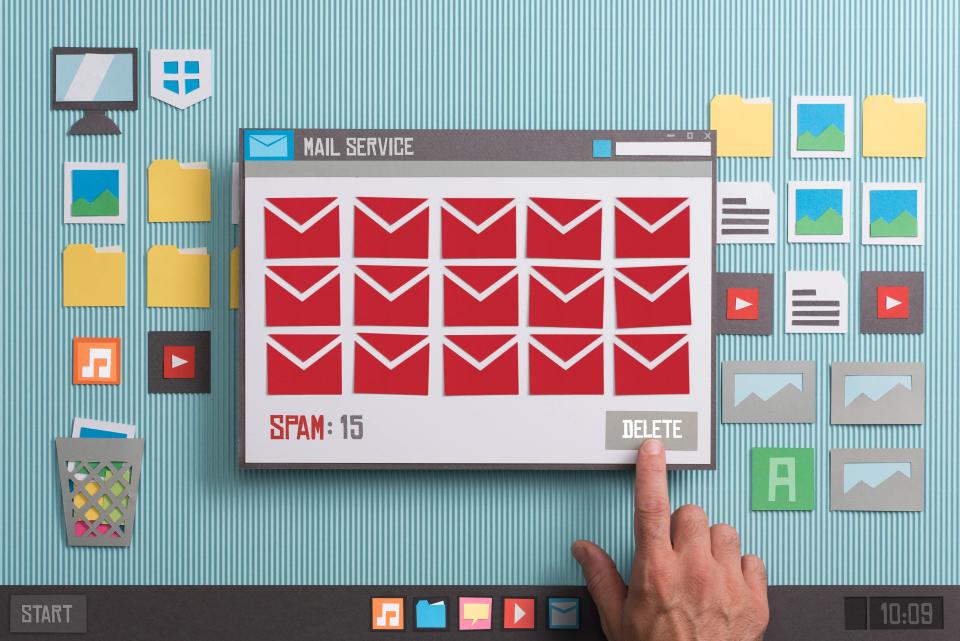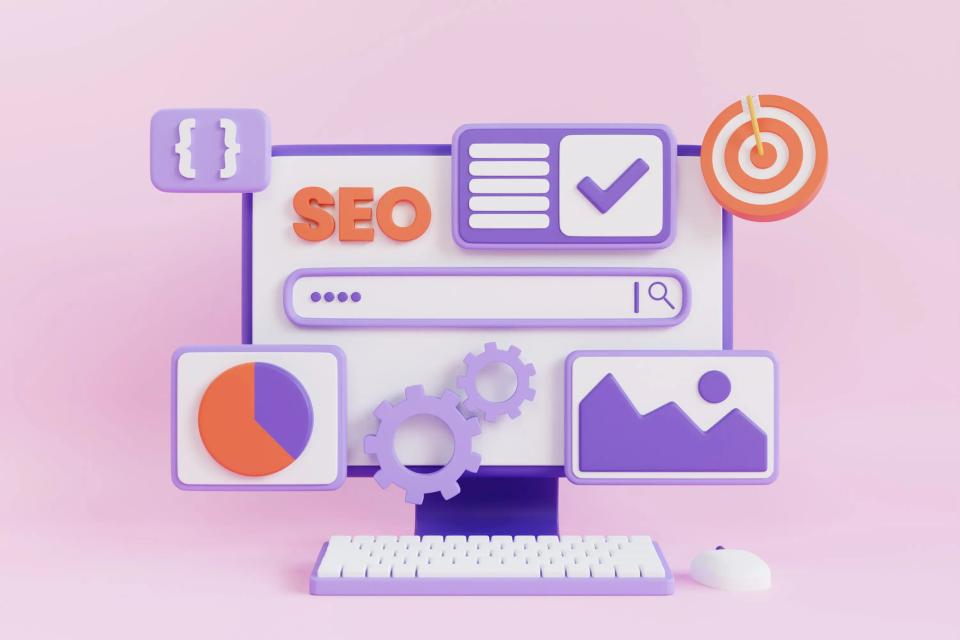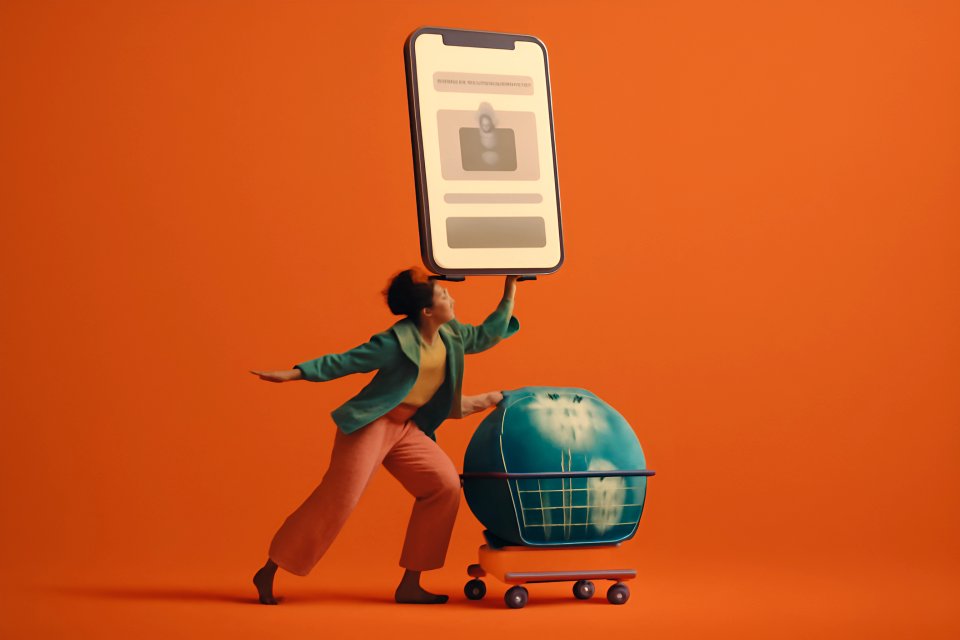In a sea of competitors, how do you ensure your business not only gets noticed but is also remembered? You're pouring your heart and soul into your products, your services, your team. But if your visual first impression falls flat, are you losing customers before they even know what you offer? The truth is, judgments are formed in the blink of an eye, and often, those judgments are based purely on what people see.
This isn't just about having a "pretty face" for your company; it's about survival, connection, and ultimately, success. This ultimate branding guide for memorable visual identity will equip you with the knowledge and tools you need to forge a visual presence that commands attention and builds lasting desire. At CaptivateClick, we believe a strong visual identity is the cornerstone of captivating design and strategic marketing – it’s how you turn fleeting glances into loyal customers.
What Exactly is Visual Identity (and What It's Not)?
So, what is this powerful force we call visual identity? Think of it as the entire sensory toolkit your brand uses to communicate visually. It's the collection of all tangible visual elements that represent your business, from your logo to the specific shades of color on your website. According to insights on foundational visual identity principles from Frontify, this includes everything that visually defines your brand.
Now, let's clear up some common confusion. Your visual identity is not your entire brand; your brand is the overall perception and experience customers have with you. It's also not "branding," which is the active process of shaping that perception. And while your logo is a crucial star player, it's just one piece of the much larger visual identity puzzle.
Understanding this distinction is the first step to wielding your visual elements with intent and power. It’s about creating a deliberate, unified look and feel that speaks volumes about who you are. This deliberate approach ensures every visual touchpoint works in harmony.
The "Why": The Crucial Role of a Memorable Visual Identity
Why invest the time, effort, and resources into crafting a memorable visual identity? Because the stakes are incredibly high, and the rewards are even higher. A strong visual identity is your silent ambassador, working tirelessly to build recognition and recall. When customers can spot your brand in a crowded marketplace, you’ve already won half the battle, as Wix's guide on visual identity essentials emphasizes.
Beyond just being seen, a cohesive visual identity establishes critical credibility and trust. People are naturally drawn to professionalism and consistency; it signals that you're serious and reliable. As Frontify points out, this consistency across channels is vital for building that trust. It also powerfully communicates your brand's unique personality and core values, allowing you to connect with your audience on a deeper, more emotional level.
Ultimately, a distinctive visual identity differentiates you from the noise of your competitors, carving out your unique space in the market. This differentiation fosters emotional connections and cultivates unwavering customer loyalty, turning casual buyers into passionate advocates. And let's not forget, it underpins all your marketing efforts, making them more effective and potentially boosting conversion optimization – a key service we champion at CaptivateClick.
Pillar 1: Strategic Logo Design – Your Brand's Signature
Your logo is the face of your brand, the single most identifiable element of your visual identity. It’s your signature, your handshake, your calling card, all rolled into one potent symbol. But a pretty picture isn't enough; your logo design must be strategic.
Key Principles of Effective Logo Design
What makes a logo truly effective, something that sticks in the mind and works hard for your business? HubSpot’s comprehensive guide on logo design highlights several key principles. Simplicity and clarity are paramount; a complex logo is easily forgotten and hard to reproduce. Think of Nike's swoosh – instantly recognizable and incredibly simple.
Memorability is another cornerstone; does your logo have a unique quality that makes it stick? It also needs to be timeless, avoiding fleeting trends that will quickly look dated. Furthermore, versatility is crucial – your logo must look sharp and legible whether it's on a giant billboard, a tiny app icon, or your website. Finally, it must be appropriate for your industry and, most importantly, resonate with your target audience.
Essential 'Logo Design Tips' for Success
Ready to dive into creating or refining your brand’s signature? Arm yourself with some essential 'logo design tips' for a smoother journey. First, understand the different types of logos: wordmarks (like Google), lettermarks (like HBO), pictorial marks or icons (like Apple), abstract marks (like Pepsi), mascots (like KFC's Colonel), combination marks (logo and wordmark together, like Adidas), and emblems (like Starbucks). Each has its strengths and is suited to different brand personalities.
Next, always consider scalability from the outset; how will it look tiny, and how will it look huge? Color choice is also critical (we'll dive deeper into that soon), as colors evoke strong emotions and associations. And a word of caution: steer clear of design trends that burn bright but fade fast, leaving your brand looking out of touch. A well-designed logo is an investment that pays dividends for years.
Pillar 2: Color Palette – Evoking Emotion and Meaning
Color is a language all its own, speaking directly to our emotions and subconscious minds. It’s one of the most powerful tools in your visual identity arsenal, capable of instantly setting a mood, conveying a message, and making your brand unforgettable. Did you know that a staggering 80% of brand recognition stems from color choices, according to DesignRush?
The Psychology of Color in Branding
Understanding the psychology of color is like having a secret key to your audience's feelings. Different colors evoke different emotional responses: blue often suggests trust and dependability (think financial institutions or tech companies like Facebook), while green can signify growth, nature, or health (common in organic food brands or environmental initiatives). Red can ignite passion and urgency, yellow can radiate optimism and warmth, and black often conveys sophistication and luxury.
The trick is to choose colors that not only look good but also deeply align with your brand's personality and the message you want to send. As Wix's insights on visual identity also touch upon, the right colors can significantly influence perception. Consider what feelings you want your brand to evoke: excitement, calm, innovation, tradition? Your color palette will be a primary driver of these perceptions.
Developing Your Brand's Color Scheme
Once you understand the emotional power of color, it's time to build your brand's unique color scheme. This typically involves selecting primary colors (the dominant shades that will be most associated with your brand), secondary colors (to complement or contrast with your primary colors and add visual interest), and accent colors (used more sparingly to highlight key information or calls to action). A well-defined scheme might include 1-2 primary colors, 2-3 secondary colors, and 1-2 accent colors.
Beyond aesthetics, ensure your color choices promote accessibility. This means paying close attention to contrast ratios, especially between text and background colors, to ensure readability for everyone, including those with visual impairments. Documenting your chosen colors with their specific codes (like HEX, RGB, and CMYK) is crucial for consistency across all digital and print materials.
Pillar 3: Typography – The Voice of Your Written Word
If your logo is the face of your brand and color its emotion, then typography is its voice. The fonts you choose say a lot about your brand's personality before a single word is even read. Are you classic and authoritative, modern and minimalist, friendly and approachable, or perhaps quirky and creative?
Choosing Typefaces that Speak Your Brand
The world of typography offers a vast array of choices, generally categorized into a few main styles. Serif fonts (like Times New Roman) have small decorative strokes at the ends of characters and often convey tradition, reliability, and formality. Sans-serif fonts (like Arial or Helvetica) lack these strokes, appearing cleaner, more modern, and often more approachable. Script fonts mimic handwriting and can range from elegant to playful, while display fonts are more expressive and best used for headlines or short bursts of text.
When selecting typefaces, prioritize readability and legibility across all devices and platforms – this is crucial for good UI/UX design. It's generally recommended to limit your brand to two or three complementary fonts to maintain clarity and avoid a cluttered look. Establish a clear typographic hierarchy (e.g., one font for headlines, another for body text, perhaps an accent font) to guide the reader's eye and create a professional, organized appearance.
Pillar 4: Imagery & Photography – Painting a Thousand Words
They say a picture is worth a thousand words, and in branding, this couldn't be truer. The images and photography you use are powerful storytellers, instantly conveying mood, context, and your brand's worldview. Consistent, high-quality imagery can elevate your brand, making it more relatable, aspirational, and engaging.
Defining Your Visual Style
Your brand's visual style in photography and imagery should be as distinct as your logo or color palette. Are you aiming for an authentic, "real-life" feel, or something more polished and aspirational? Will your imagery be lifestyle-focused, showcasing people interacting with your product or service, or more product-centric, highlighting features and details? According to Shopify's guide on photography style, defining these aspects is key.
Consider whether custom photography is essential for showcasing your unique offerings and brand personality, or if high-quality, carefully selected stock imagery can effectively fill some gaps, especially when starting out. Whatever your choice, consistency is paramount: maintain a similar tone, lighting style, composition, and subject matter across all your visuals. This creates a cohesive and recognizable visual narrative that reinforces your brand identity at every turn.
Pillar 5: Iconography, Illustrations & Other Supporting Elements
Beyond your logo, colors, typography, and photography, a rich visual identity often includes a suite of supporting graphic elements. These can include custom icons, unique illustration styles, distinctive patterns, textures, and other graphic devices. When used thoughtfully, these elements add depth, personality, and another layer of recognizability to your 'visual branding' experience.
Custom icons, for example, can be designed to perfectly match the style of your logo and overall aesthetic, reinforcing your brand identity in subtle yet powerful ways, such as in website navigation or feature highlights. As Procreator's insights on iconography guidelines suggest, consistency in aspects like stroke width and curves is vital for a professional look. An illustrative style, whether hand-drawn, geometric, or abstract, can also become a signature element, adding a unique flavor that photography alone might not achieve.
Patterns and textures can be used for backgrounds, social media graphics, or packaging, adding visual interest and reinforcing brand recall. The key is that all these supporting elements should feel like they belong to the same family, working together harmoniously to create a cohesive and immersive brand world. They are the details that often transform a good visual identity into a great one.
Step 1: Define Your Brand Core
Before you even think about pixels and pantones, you must dig deep into the heart of your business. What is your mission, the fundamental purpose that drives you? What is your vision for the future, the impact you want to make? And critically, what are the core values that guide every decision you make?
Clearly defining your mission, vision, and values provides the strategic bedrock for your visual identity. Next, get crystal clear on your target audience. Who are you trying to reach? Creating detailed customer personas – semi-fictional representations of your ideal customers – will help you understand their desires, pain points, and aspirations, allowing you to craft visuals that truly resonate with them.
Finally, articulate your brand personality and voice. Is your brand playful and witty, or serious and authoritative? Sophisticated and elegant, or rugged and down-to-earth? This personality will heavily influence your visual choices. And don't forget your Unique Selling Proposition (USP): what makes you different and better than the competition? Your visual identity should amplify this uniqueness.
Step 2: Conduct a Competitive Visual Analysis
You don't operate in a vacuum. Understanding what your competitors are doing visually is crucial for carving out your own distinct space. This isn't about copying; it's about identifying opportunities to stand out and be truly memorable. Start by identifying your key competitors – who are they, and what do they look like?
Analyze their visual identities meticulously. What kind of logos do they use? What are their primary color palettes? What is the style of their typography and imagery? As highlighted by Filestage's analysis of brand identity examples, looking at how established brands like Heinz have evolved while retaining core visual cues can be very insightful.
Ask yourself: What seems to be working well for them? What visual approaches feel tired, generic, or ineffective? Look for gaps and opportunities. If everyone in your industry is using blue, perhaps a bold, unexpected color could help you differentiate. This analysis will arm you with the insights needed to make strategic visual choices that ensure your brand doesn't just blend in but truly captivates.
Step 3: Visual Storytelling – Weaving Your Narrative
Your visual identity isn't just a collection of pretty elements; it's a powerful storytelling tool. Every color, font, image, and icon should work together to weave a compelling narrative about your brand. What story do you want to tell? Is it a story of innovation, heritage, community, adventure, or comfort?
Think about how all your chosen visual elements – your logo, color palette, typography, imagery, and supporting graphics – come together to communicate your core message and brand values. For instance, if your brand is about eco-conscious living, your visuals might feature earthy tones, natural textures, and imagery of sustainable practices. This consistent narrative helps build an emotional connection through visuals, as Filestage discusses. You can explore more on creating a cohesive brand identity through visual storytelling to deepen this connection.
Ensure that every visual choice, no matter how small, reinforces this central narrative. This cohesive approach transforms your visual identity from a mere aesthetic exercise into a strategic asset that communicates who you are, what you stand for, and why customers should choose you. For more on this, consider how to transform your brand identity with logo design and visual storytelling.
Step 4: Striving for Cohesion and Consistency Across All Touchpoints
Imagine your brand is a person. You'd expect them to look and sound consistent every time you meet them, right? The same applies to your business. Cohesion and consistency across all brand touchpoints are non-negotiable for building a strong, recognizable, and trustworthy visual identity. This means ensuring your visual elements are applied uniformly wherever your audience encounters your brand.
This includes your website, which is often the digital front door to your business. Your website aesthetics must align with your brand strategy and effectively integrate your brand identity with your website design. It extends to mobile apps, your social media profiles (Facebook, Instagram, LinkedIn), all your marketing materials (digital ads, email outreach), and even physical assets like packaging or storefronts if applicable. The goal is to create a seamless and unified brand experience, where essential website design principles enhance your brand's identity.
This consistency is what builds recognition and reinforces your brand message, as emphasized by both Frontify's take on cross-channel consistency and Wix's view on consistency for loyalty. It’s about creating a cohesive brand identity with strategic website design and ensuring that modern web design trends support a strong brand identity. Ultimately, you want to achieve an integrated branding and website design that also effectively combines user experience and branding in website design, making every interaction a clear reflection of your brand. Don't forget the power of brand storytelling through website design best practices.
The Design Process: From Concept to Reality
Transforming your brand strategy and visual concepts into a tangible reality is an exciting journey. While specifics can vary, the design process typically follows a structured path to ensure a thoughtful and effective outcome. At CaptivateClick, our approach, honed over years of experience, emphasizes collaboration and strategic thinking every step of the way.
It often begins with deep research and discovery – revisiting your brand core, target audience, and competitive landscape. This is followed by mood boarding, where designers collect visual inspiration (colors, textures, imagery, typography) to define a potential aesthetic direction. Then comes the creative exploration: sketching initial logo concepts, experimenting with color palettes, and exploring typographic pairings, all leading to the development of initial digital designs.
These initial designs are then presented, discussed, and refined based on feedback. This iterative process of design, review, and refinement continues until the visual identity perfectly captures the essence of the brand and meets all strategic objectives. It’s a meticulous process, but essential for crafting a visual identity that truly works.
Creating Your Brand Guidelines: The Holy Grail of Consistency
Once your stunning new visual identity is finalized, how do you ensure it stays stunning and, more importantly, consistent across every application, now and in the future? The answer lies in comprehensive brand guidelines. Think of these guidelines as the instruction manual or the "holy grail" for your brand's visual (and often verbal) expression. They are essential for maintaining brand integrity, especially as your team grows or when working with external partners.
So, what are brand guidelines? They are a documented set of rules and standards that explain how your brand elements should (and should not) be used. According to Acquia's insights on developing brand guidelines, these are frameworks for creativity, not restrictions. Key components typically include: detailed logo usage specifications (minimum size, clear space, incorrect uses), your exact color codes (CMYK, RGB, HEX), typography specifications (fonts, sizes, hierarchy), an imagery style guide (tone, subject matter, examples), and often, guidelines on brand voice and tone.
These guidelines ensure that everyone who communicates on behalf of your brand does so in a consistent and cohesive way. As Frontify emphasizes in its guide on brand consistency, having clear guidelines and even templates for things like social media graphics can streamline efforts and prevent brand dilution. At CaptivateClick, we often develop robust brand guidelines for our clients, empowering them to manage their brand effectively.
Launching and Living Your Visual Identity
With your new visual identity crafted and your brand guidelines in place, it's time for the exciting part: bringing it to life! Launching your new or updated visual identity should be a planned event, not an afterthought. This involves systematically rolling out the new visuals across all your touchpoints – website, social media, marketing materials, email signatures, and any physical assets.
A crucial part of this launch is internal communication and training. Your team members are your brand's biggest ambassadors, so they need to understand the new visual identity, why it was developed, and how to use it correctly according to the brand guidelines. Frontify's strategies for brand consistency highlight the importance of training teams and even internal branding to ensure everyone is aligned.
Living your visual identity means consistently applying it day in and day out. It's about making it an integral part of your company culture. Encourage your team to be proud of the brand's look and feel and to be vigilant about its correct application.
Evolving Your Visual Identity: When and How to Refresh
Your business isn't static, and neither is the market. Over time, your brand may evolve, your audience's tastes may shift, or your visual identity might simply start to feel dated. Knowing when and how to refresh or rebrand your visual identity is a critical strategic decision. A refresh is typically a modernization of your existing visuals, while a rebrand is a more fundamental overhaul, often tied to a significant shift in business strategy.
Signs that a refresh might be needed include: your visuals no longer accurately reflect your brand's current mission or values, your competitors look more modern, or your identity feels inconsistent across new platforms. When considering an update, the goal is often to modernize and re-energize while maintaining core recognizability, especially if you have established brand equity. Think of how brands like Coca-Cola or Shell have subtly evolved their logos over decades, keeping them fresh yet instantly familiar.
A full rebrand is a bigger undertaking, usually prompted by major changes like a merger, a new target market, or a significant pivot in your business model. Whether a subtle refresh or a complete rebrand, the process should be as strategic and thoughtful as the initial creation of your visual identity, always rooted in your brand core and business objectives.
Conclusion: Your Memorable Visual Identity Awaits
Crafting a memorable visual identity is far more than an artistic endeavor; it's a fundamental business strategy. It's the silent language that speaks volumes about your credibility, your personality, and your promise to your customers. A strategic, cohesive, and memorable visual identity doesn't just make you look good; it makes you recognizable, trustworthy, and ultimately, more successful.
Remember, this is an ongoing investment, not a one-time task. Your visual identity needs to be nurtured, consistently applied, and thoughtfully evolved as your business grows and changes. With the insights from this ultimate branding guide for memorable visual identity, you're now equipped with the understanding and the framework to build or refine a visual presence that truly captivates and resonates.
Ready to build a brand that captivates and clicks? The team at CaptivateClick, with over 15 years of experience in crafting compelling visual identities and brand strategies, is here to help. We've guided global businesses like Hawkeye, LexEnergy, and Fjällbris to visual success. Contact us today for a consultation!
What's your biggest challenge in creating a memorable visual identity? Share your thoughts in the comments below!



























































































































